Contents
Guide
KNITTED
ANIMAL FRIENDS
LOUISE CROWTHER

www.sewandso.co.uk
CONTENTS
INTRODUCTION
Welcome to my collection of animal friends, all knitted with one thing in mind: to make them irresistible. We all have a special person in our lives who would love one of these little characters, even if its ourselves! If you cant choose between a smart fox, or a cheeky raccoon, you could always make them all In this book I have gathered all the information you will need from yarn choice to finishing techniques, and kept the patterns concise and clear to make the creation of each animal as enjoyable to knit as the finished toy is to give. Dont feel that you have to stick to the outfits I have made for each creature. As the animals are all the same size, you can mix and match as much as you like. I have carefully designed each item of clothing so it will fit any of the animals, with little buttoned openings to accommodate all the different sized tails. Why not create Charlottes coat in a shade of blue for Amelia? Or make your hedgehog a boy with shorts and a striped jumper? You could even make a whole interchangeable wardrobe for one lucky animal.
The patterns in this book are designed for you and your friends and family to enjoy and are for private use only. I cant wait to see photos of your knitted animal friends! Share them using the hashtag #knittedanimalfriends, so that I can enjoy looking at your creations and you can take a look at everyone elses too. Whatever you choose to knit, I hope that you enjoy the process and cherish your finished animal friend as much as I have loved designing and creating them. 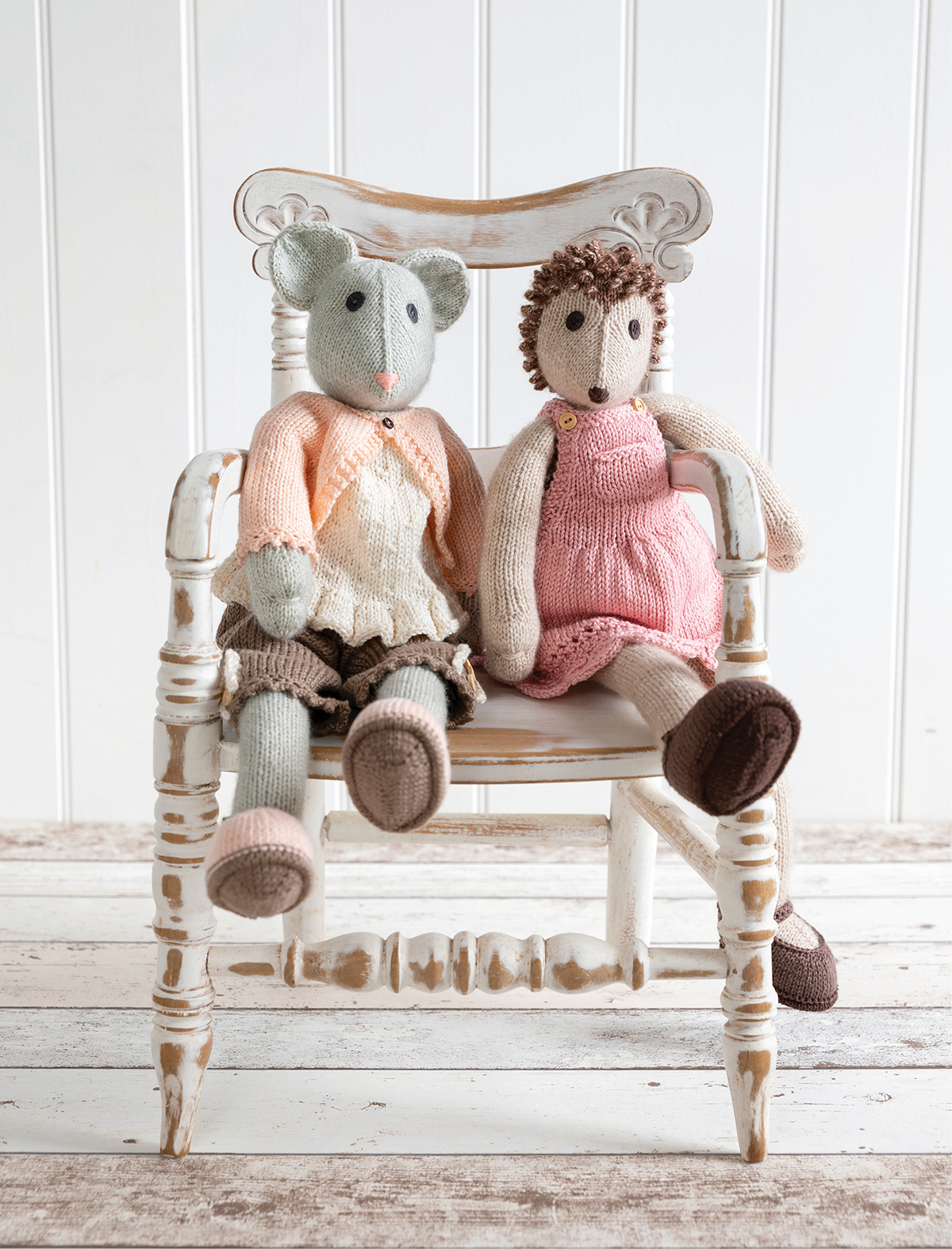
TOOLS AND MATERIALS
YARN
Cotton yarn has always been my favourite yarn for toys. I love the look and feel of cotton, it is non-allergic for most people, incredibly robust and stands up well to being played with. The animals in this book have all been made using Scheepjes Stonewashed yarn which is a sport weight 78% cotton/22% acrylic mix yarn.
Sport weight is slightly thicker than 4-ply but thinner than DK, also sometimes referred to as 5-ply yarn. All the animals outfits in this book have been made using Scheepjes Catona and Scheepjes Catona Denim yarns, both these are a 4-ply (fingering) weight 100% cotton yarn. Although I recommend using the above yarns to achieve the same look and feel as my animals, the patterns will work just as well with other sport weight yarns for the animals and other 4-ply yarns for the outfits. When substituting yarns you need to look for ones with a similar tension/gauge on the ball band as the ones recommended (see below for ball band information).
BALL BAND INFORMATION:
SCHEEPJES STONEWASHED
Available in balls of 50g (134oz) = 130m (142yd) Tension: 24 stitches and 32 rows for a 10 x 10cm (4 x 4in) tension square using 33.5mm (US 212US 4) needles.
SCHEEPJES CATONA DENIM
Available in balls of 50g (134oz) = 125m (137yd) Tension: 26 stitches and 36 rows for a 10 x 10cm (4 x 4in) tension square using 3mm (US 212) needles.
NEEDLES
The animals are all made flat on a pair of straight needles; I like the structure this gives the animals and find working Intarsia and stuffing the toys much easier this way.
NEEDLES
The animals are all made flat on a pair of straight needles; I like the structure this gives the animals and find working Intarsia and stuffing the toys much easier this way.
You will need a pair of 2.75mm (US 2) straight needles to knit the animals and a selection of 3mm (US 212) and 3.5mm (US 4) needles to knit their outfits (see patterns), but you may find you need to adjust your needle sizes to achieve the correct tension/gauge. The outfits are mostly knitted in the round: I prefer to use the 23cm (9in) circular sock needles for these little garments with a set of four double-pointed needles for the sleeves and a pair of straight needles for any back and forth knitting, but you can use whichever method of knitting in the round you are most comfortable with (magic loop, two circular needles, dpns).
BUTTONS
For the animals eyes I have used 10mm (12in) diameter buttons. For the outfits you can use any buttons with a diameter of about 69mm (1438in). The small buttons I used on the outfits are 6mm (14in) and the slightly larger wooden buttons are about 9mm (38in).
Safety noteDont use safety eyes, buttons, beads or glass eyes on toys for children under three years old as they are a potential choking hazard.STUFFING
I recommend a synthetic high-loft polyester toy filling for stuffing these animals.
Safety noteDont use safety eyes, buttons, beads or glass eyes on toys for children under three years old as they are a potential choking hazard.STUFFING
I recommend a synthetic high-loft polyester toy filling for stuffing these animals.
It is lovely and soft, holds its shape well and is hand or machine washable on a cool delicates cycle. When stuffing your animal use small pieces, roll and manipulate the body parts in your hands to spread the stuffing evenly and ensure a smooth shape. Tease out any lumps using a blunt tapestry needle carefully inserted through the knitting in the gap between stitches.
BASIC KIT
In addition to the things on the You Will Need lists in the patterns, these are the other items you need to complete the animals and their outfits. The following is a basic guide:
- Cable needle
- Tapestry needle
- Stitch holders
- Stitch markers
- Removable stitch markers
- Waste yarn
- Sewing needle and thread
- Long sewing needle
- Scissors
- Toy stuffing
- Blocking pins
WASHING
If made using the recommended yarn and stuffed with synthetic toy filling, these animals can either be washed by hand or on a gentle cool cycle in your washing machine.
TIP
The needles listed in the You Will Need lists in each project are the ones that I used for the animals and their outfits, but as a bare minimum you could just use a pair of 2.75mm (US 2), 3mm (US 212) and 3.5mm (US 4) straight needles, and a set of four 3mm (US 212) and four 3.5mm (US 4) double-pointed needles.
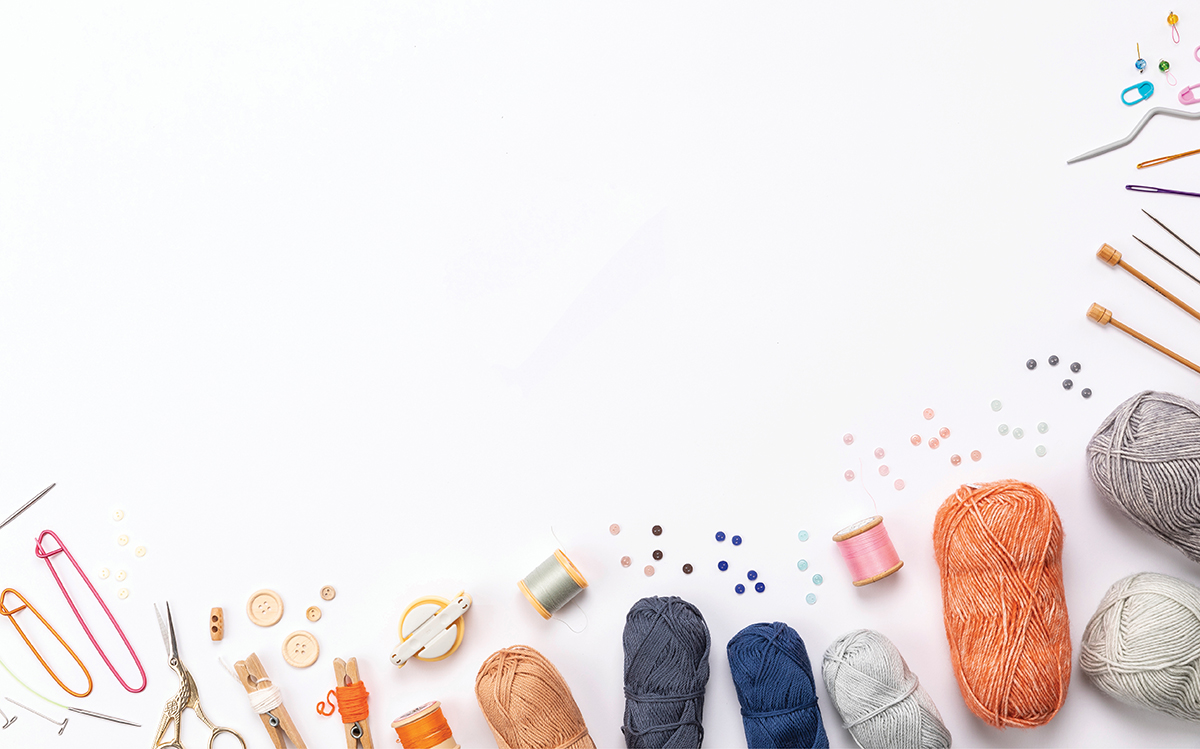
ABBREVIATIONS
| C3B | Slip 2 stitches onto cable needle and hold at back of work, K1, K2 stitches from cable needle |
| C3F | Slip 1 stitch onto cable needle and hold at front of work, K2, K1 stitch from cable needle |
| C4B | Slip 2 stitches onto cable needle and hold at back of work, K2, K2 stitches from cable needle |
| C4F | Slip 2 stitches onto cable needle and hold at front of work, K2, K2 stitches from cable needle |
| CDD | Central double decrease: slip 2 stitches together knitwise, K1, pass the 2 slipped stitches over |
| CN | Cable needle |
| dpn(s) | Double-pointed needle(s) |

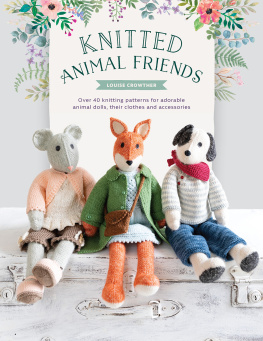
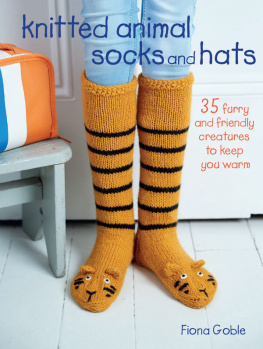
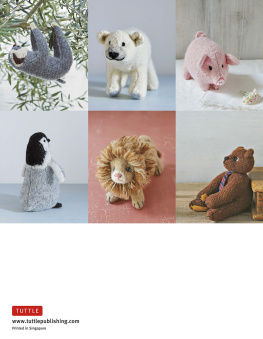
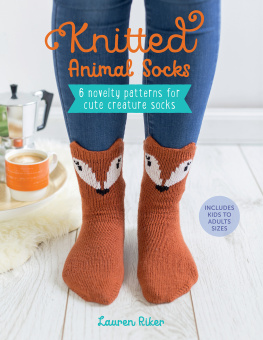
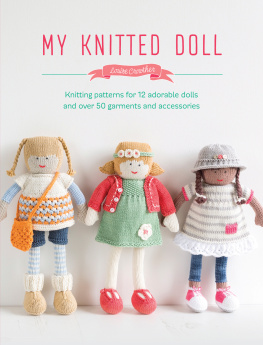

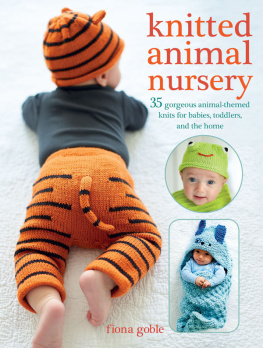


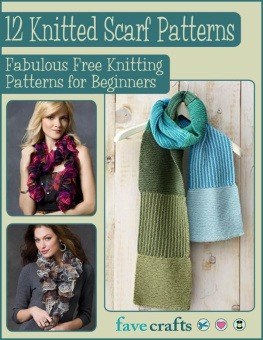

 www.sewandso.co.uk
www.sewandso.co.uk 
